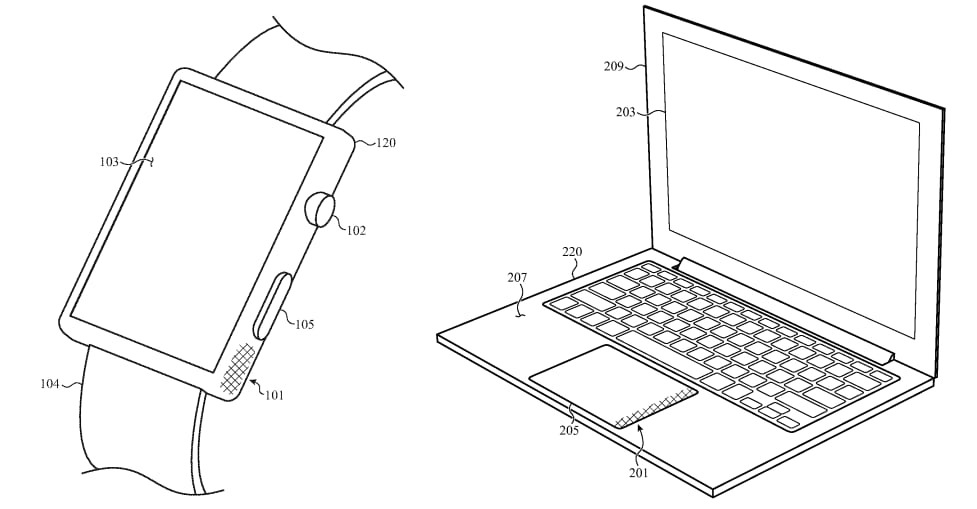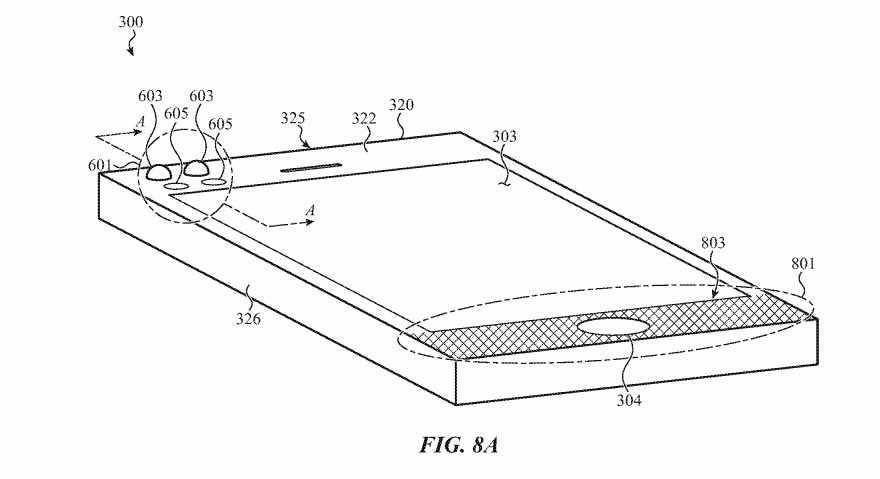Apple's Taptic Engine could see big changes in the future, by contextually providing users with physical feedback only in specific places on an iPhone or Apple Watch, or deforming the case of the device to give the user a touchable alert.
Haptic feedback is a common part of smartphone use, with the use of motors vibrating the mobile device to almost silently alert the user to events, either separately or in concert with an audible notification. Though usually limited to notifications, haptic feedback is also employed in other confirmation-based ways, such as telling users they have pressed a key on a software keyboard or a button with Haptic Touch.
While haptic feedback is extremely useful, It is also potentially an annoyance. Repeated buzzing could be a distraction to the user or others. Turning off the notification entirely could mean the user misses out on something important, making it less desirable to disable it entirely.
In a patent granted by the US Patent and Trademark Office on Tuesday titled "Tactile notifications for electronic devices," Apple continues with the theme of physical notifications to the user. However, instead of bluntly vibrating the entire device, it instead proposes making only a specific area of the device be the point where physical feedback could be felt, while having a more muted effect on the rest of the device.
In theory, this will result in a less intrusive and more tunable experience for users than conventional notifications, and in some situations, it could enable users the choice of feeling out for notifications simply by touching a certain part of the device.
For this research, the area for the focused tactile feedback would be defined on the device. This will vary, but largely consists of areas where a user may touch with fingers, but not too frequently and without impeding normal usage. Suggested areas include a side panel of the Apple Watch, an edge of a MacBook's trackpad, or a bezel corner of an iPhone display.

Localized haptics could be made to only be felt on small portions of a device.
One image suggests the region could be the silicone tip of earbuds, which could mean a notification could be felt by the user wearing them, but without any annoying noise interrupting music playback.
The device could simply be constructed to concentrate vibrations from haptic feedback to that specific area. It may also include some form of bump or ridge that could protrude on-demand to both inform users of its purpose and to accentuate lower-powered vibrations.
As the notifications can differ in type, so too can the vibrations in that area. Multiple actuators could be used to create varying sensations and strengths to differentiate the notifications for the user.
The system may not necessarily have to rely on localized buzzing, but could still provide hyper-localized notifications. These could be controlled by a variety of actuators, including linear, magnetic, reluctance, and electroactive versions.

An iPhone with portions dedicated to actuating sections of the casing.
The patent lists its inventors as Per Haakan Linus Persson and Steven J. Taylor. It was originally filed on May 22, 2018.
Apple files numerous patent applications on a weekly basis, but while the existence of a patent indicates ares of interest for the company's research and development teams, it does not guarantee the concepts will appear in a future product or service.
Haptics have appeared in many different patent filings over the years, and localized haptic feedback has cropped up in some instances. One filing from June 2020 suggested Apple was considering inserting some form of haptics into an iPhone's buttons.
A more exotic form of filing is the "Keyless keyboard" concept from March 2018, where Apple suggested using a secondary display as a software keyboard for a MacBook, with haptics used to mimic the pressing of keys.
The Apple Pencil has also been a target for filings, including suggestions it could include vibrations and shifting weights, use haptics to simulate drawing on paper, and even haptics that use shear force feedback instead of vibrations.
"case" - Google News
September 01, 2020 at 08:20PM
https://ift.tt/3lB3B6F
Future Taptic Engine may extrude part of an iPhone case for a tactile notification - AppleInsider
"case" - Google News
https://ift.tt/37dicO5
https://ift.tt/2VTi5Ee
Bagikan Berita Ini
















0 Response to "Future Taptic Engine may extrude part of an iPhone case for a tactile notification - AppleInsider"
Post a Comment